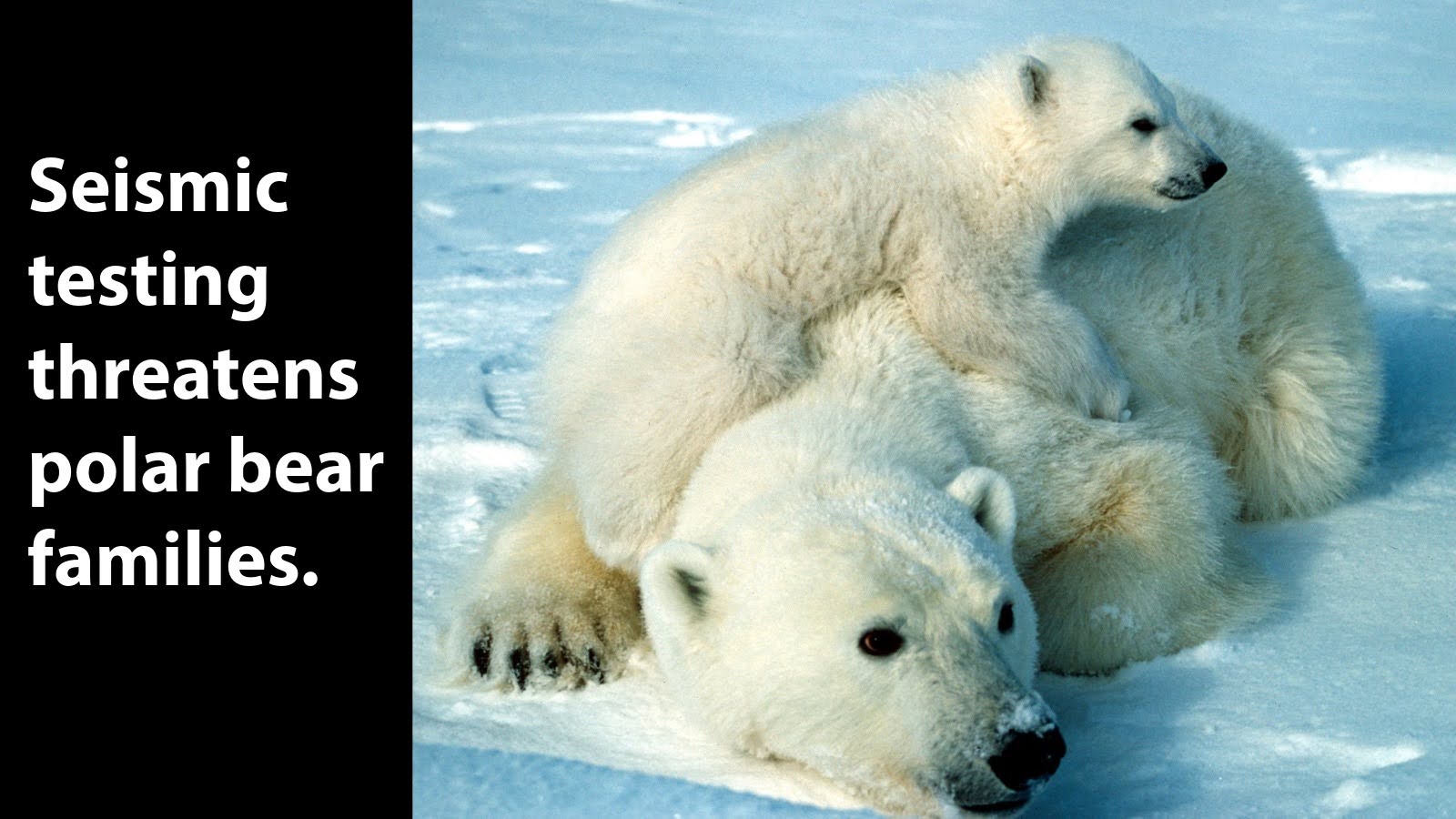

John,
As temperatures drop and the days grow short along the Arctic's Southern Beaufort Sea, a female polar bear journeys to the Arctic National Wildlife Refuge's Coastal Plain to dig her den.
There she will stay, safe from the heavy snows and sub-zero temperatures, until spring when she will emerge accompanied by little white rollicking puffballs -- her new cubs.
But what happens if, during one of the intimate moments spent nursing her newborn cubs, she's jerked awake by a thunderous drone vibrating the walls of her den? Does she flee, leaving her cubs alone to die? Or does she stay by their side as massive trucks rumble overhead, risking the chance of being crushed below their weight?
If plans to conduct seismic testing for oil across the Arctic Refuge come to fruition, mother bears may soon be forced to make this devastating choice.1,2

The polar bears of the Southern Beaufort Sea are dying as rising temperatures melt the sea ice they rely on to hunt and den. The population fell from 1,500 to 900 just between 2001 and 2010.3
Sending a barrage of "thumper trucks" into critical denning habitat could be devastating for these already-threatened bears.
Each winter, hundreds of pregnant polar bears return to northern Alaska's Arctic Refuge to dig dens where they will birth and raise their cubs. This region has also attracted the attention of the oil and gas industry, which has been vying to drill for fossil fuels beneath the vibrant tundra landscape for decades.4
To determine the exact location of oil reserves, companies conduct seismic testing -- a process through which massive thumper trucks travel across the winter landscape, sending seismic waves into the ground to produce a 3D image of the subsurface.
Seismic testing is incredibly destructive -- scars in the earth still crisscross the fragile tundra from the last time Congress allowed seismic testing in the area in the 1980s.5
These heavy trucks can also collapse polar bear dens, crushing the families within. A previous proposal for seismic testing acknowledged there being a 1 in 5 chance of a bear being disturbed or crushed in the process.
A 1% chance of injuring or killing a polar bear is too high -- 21% is heinous.6
It doesn't stop at seismic testing, of course.
If the testing reveals oil beneath the ground, road construction, invasive drilling and disturbing oil processing could follow -- all to enable the very thing that's endangered polar bears in the first place: the continued burning of fossil fuels.7
For years, we've been working to defend the Arctic Refuge and the creatures that call it home. As the oil and gas industries continue to push for drilling, we're going to be drumming up support to stop this invasive practice in critical polar bear habitat.
A polar bear cub born next winter faces an increasingly uncertain future. But by protecting the Arctic Refuge from seismic testing, we can help make sure she'll live to see the sun.
Thank you for supporting this important work,
Ellen Montgomery
P.S. Want to help protect polar bears and other Arctic wildlife from the dangers of seismic testing? Donate today to help fuel our campaigns in defense of the Arctic National Wildlife Refuge.
1. Alex DeMarban, "Alaska development agency takes step toward drilling in Arctic National Wildlife Refuge," Anchorage Daily News, July 30, 2025.
2. Katelyn Weisbrod, "Polar Bear Moms Stick to Their Dens Even Faced With Life-Threatening Dangers Like Oil Exploration," Inside Climate News, July 7, 2020.
3. Ellen Montgomery, "On International Polar Bear Day, a reminder that polar bears and oil drilling do not mix," Environment America, February 27, 2021.
4. Ellen Montgomery, "On International Polar Bear Day, a reminder that polar bears and oil drilling do not mix," Environment America, February 27, 2021.
5. Liz Rushkin, "BLM projects 'insignificant' impact from seismic work in ANWR," Alaska Public Media, July 27, 2018.
6. Henry Fountain, "Arctic Seismic Work Will Not Hurt Polar Bears, Government Says," The New York Times, December 7, 2020.
7. Ellen Montgomery, "On International Polar Bear Day, a reminder that polar bears and oil drilling do not mix," Environment America, February 27, 2021.
Your donation will be used to support all of our campaigns to protect the environment, from saving the bees and protecting public lands, to standing up for clean water and fighting climate change. None of our work would be possible without supporters like you. Environment Colorado may transfer up to $50 per dues-paying member per year into the Environment Colorado Small Donor Committee.
Environment Colorado, Inc.
1543 Wazee St., Suite 400, Denver, CO 80202, (303) 573-3871
Member questions or requests call 1-800-401-6511.
Facebook | Twitter

If you want us to stop sending you email then follow this link -- Unsubscribe.